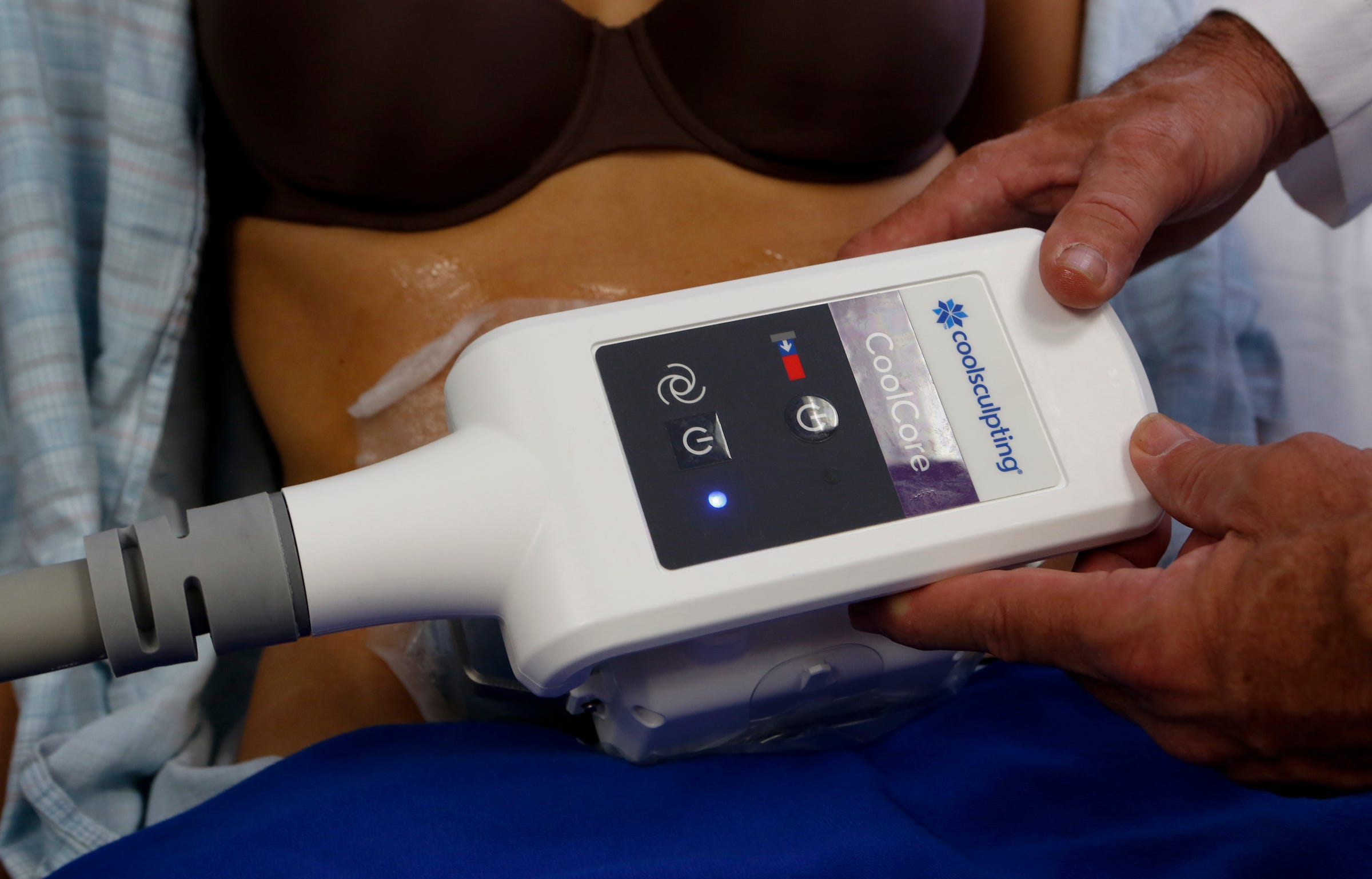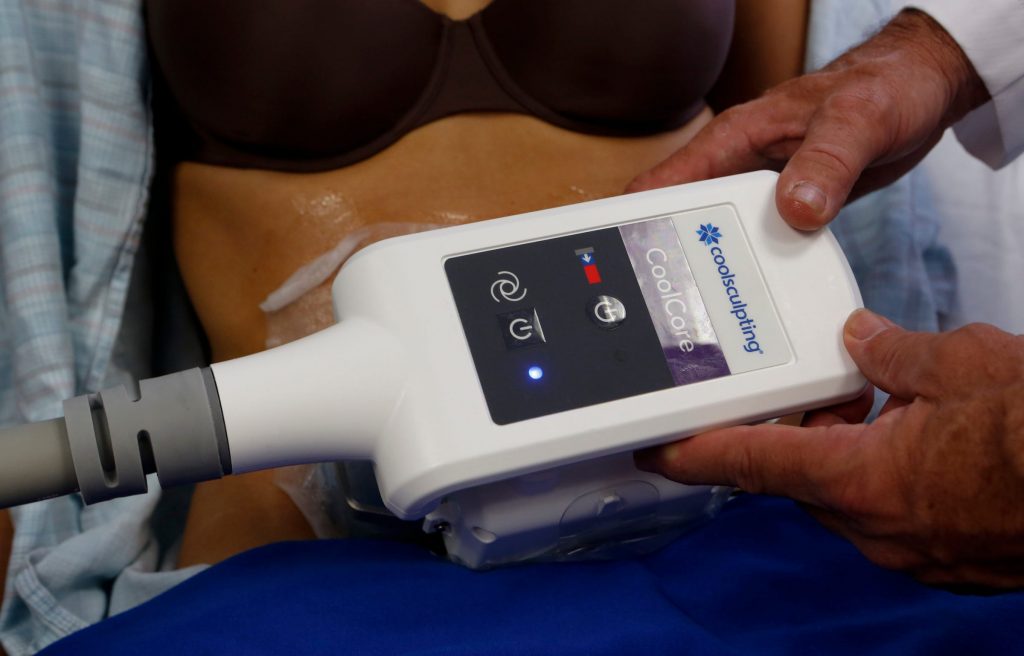
- Linda Evangelista says the fat-reduction procedure CoolSculpting has left her disfugured.
- The side effect, paradoxical adipose hyperplasia, leads fat to expand and harden instead of shrink.
- Prospective CoolSculpting patients should seek established providers and know the signs of PAH.
If you want to melt away stubborn fat but don't want to deal with the recovery time or invasiveness of liposuction, CoolSculpting is billed as a good option for you.
The procedure involves pinching fat between two paddles that are cold enough to kill fat cells while sparing the skin, according to WebMD. The liver then removes the dead cells over the following weeks and months.
"CoolSculpting is sought after by many people because it is a simple, painless procedure that lasts about an hour," plastic surgeon Dr. Andy Wongworawat wrote for the Advanced Institute for Plastic Surgery. CoolSculpting, which was cleared by the US Food and Drug Administration in 2010, says it's treated more than 8 million people worldwide.
But supermodel Linda Evangelista says a rare side effect from the treatment called paradoxical adipose hyperplasia (PAH) has left her "severely disfigured," "unrecognizable," and unable to work. In a People magazine cover story hitting stands tomorrow, Evangelista says her body is covered in hardened fat bulges that affect her posture, force her to wear a girdle to walk in a dress, and prevent her from looking in mirrors.
"I don't recognize myself physically, but I don't recognize me as a person any longer either," Evangelista told People.
Insider talked to a plastic surgeon to learn more about PAH and what else potential patients should know about CoolSculpting. The device's parent company, AbbVie, directed Insider to an FAQ page in response to a request for comment.
PAH may occur when fat cells fight back against CoolSculpting
Some research suggests PAH affects just 0.0051% of CoolSculpting patients. AbbVie puts the percentage at 0.033%.
Dr. Johnny Franco, a board-certified plastic surgeon and founder of Austin Plastic Surgeon, told Insider his practice probably sees about one patient with the condition a quarter.
(While his practice doesn't offer CoolSculpting, opting for even more modern technologies for the same purpose, he gets referrals from local dermatologists whose patients have developed PAH.)
Since it's so rare, experts don't know why some CoolSculpting patients get PAH, though it's more common in men, people of Hispanic or Latino origin, those whose belly is targeted, MedicineNet.com reports.
Any procedure comes with some unpredictability, Franco said.
"Whenever you do some type of controlled trauma to the body, sometimes the body reacts differently to try to protect itself," he said. In the case of PAH, it seems the body develops scar tissue and fibrosis instead of flushing out the dead cells, making the growths firmer than typical body fat, he said.
A similar theory is that when some fat cells get hit with CoolSculpting, they may "go into survival mode and increase their size in order to subsist." They're then nourished by new blood vessels, allowing the cells to "grow to abnormally large sizes," Wongworawat writes.
There are effective treatments for PAH, but they can defeat the original purpose of avoiding surgery
Before scheduling a CoolSculpting procedure, ask different providers how often they perform the procedure and how often they've seen PAH as a side effect, Franco said. Talk to them about risks and benefits, and what results you can realistically expect.
Choosing someone established can also help ensure he or she will see you through the whole process if side effects do arise, Franco added.
Keep in mind any CoolSculpting or similar procedure will lead to some swelling right away. PAH, by contrast, can take six months to develop and be firm and raised, sometimes appearing like a stick of butter, Wongworawat says.
Franco also recommends focusing one area of the body at a time so you know if you have an adverse reaction before putting more of your body at risk.
And, while Evangelista says liposuction to treat her PAH backfired, Franco says that's unusual and that various energy-based liposuctions usually work well in reversing the damage. The bigger blow to patients can be emotional.
"It's a little bit of a journey because most of the people who did CoolSculpting or any of the minimally invasive or non-invasive fat reductions did it because they wanted to avoid surgery," he said.


